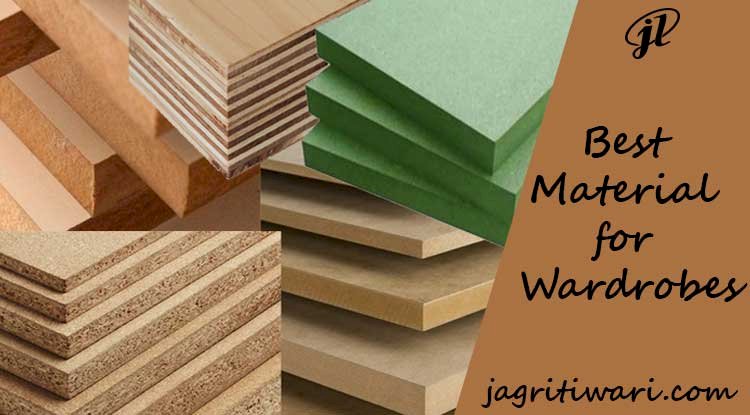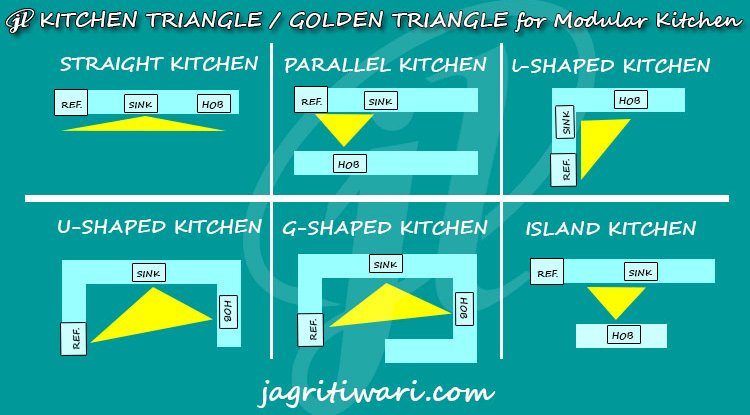What are the Best Material for Wardrobes?
The wardrobe material used to make your customized wardrobe is a good indicator of the returns it will give you over the years.

In this blog we will try to answer some of the common questions which go through the mind of a buyer when deciding about getting a wardrobe for their home.
Question like:
- What wardrobe materials to use?
- Why are some materials costly or cheap?
- How much a wardrobe will cost?
What wardrobe materials to use?
The best wardrobe material is one that balances durability and functionality with oodles of style. Here’s a list of wardrobe materials to pick from:
- PLYWOOD
- HDHMR/HDF
- MDF
- PARTICLE BOARD
-
PLYWOOD
Types of Plywood
· Architect Ply
· BWP(Boiling Water Proof)
· BWR(Boiling Water Resistant)
· MR(Moisture Resistant)
Advantages of Plywood
- Plywood has a reduced possibility to bend because odd numbers of plies are attached maintaining balance inside plywood.
- The stiffness of plywood has made it hard to bend and inflexible.
- Plywood helps to contribute to the economy.
- While solid wood is heavy, furniture made from plywood are comparatively lighter to transfer.
Disadvantages of Plywood
- Plywood is in many aspects weaker than wood.
- Not durable like wood.
- Not always easy to sculpture on this.
- Lighter than normal wood.
- Without some special resistance method maximum after long-term get attacked by insects.
- Plywood cannot be exposed to wet or moisture weather for a long period of time.
- The surface of plywood if not painted well can be peeled off.
-
HDHMR/HDF
HDF(High Density Fibre Board)
- High Density Fiberboard (HDF) is an engineered board produced from resin bonded wood fibers under high pressure and heat.
- HDF is a non-load-bearing product for interior use in dry conditions. HDF, due to its very fine surface, is suitable for different coatings – veneering, laminating, painting and varnishing.
- HDF is available in a variety of thicknesses, and a sanded surface to one or both sides.
HDHMR (High Density High Moisture Resistance)
HDHMR board has a multi-dimensional bond with single layer glue architecture, hence it provide higher moisture resistance compared to normal plywood. Where normal plywood catches moisture and there layers start to peel off, HDHMR board will not losses its strength.
- HDHMR stands for High Density High Moisture Resistance.
- It is basically an upgraded term of plywood, used to develop tough and robust wooden usage.
- Explaining the definition, HDHMR board is made by combining fiber chips, forest wood waste through a homogeneously construction process.
- These fiber chips are pressed together to form a single layer, removing small wood content to form a robust higher density board.
- These boards are mainly used where moisture and mould wooden boards are required like kitchen shutters, packing industry furniture, outdoor fixture, etc.
-
MDF
- MDF is Medium Density Fibreboard.
- Low cost has made it a strong alternative of wood.
Advantages of MDF
- MDF has economic value to common people as it is cheaper at cost and inexpensive. So, they are within everyone’s reach to purchase.
- MDF saves trees as it is recycling process.
- MDF is resistant to some insects as some chemicals are used for the processing of MDF.
- It can be painted or stained and given a look just the same as real wood. So, it can replace the place of wood furniture.
- Depiction on MDF is easier than on wood.
- To provide MDF a look like real wood veneers, laminators may easily be attached to it.
- The solid, dense, flat, stiff MDF is a good choice instead of wood.
- MDF has no grain as it’s not a natural product, it’s easy to cut, drill without damaging.
Disadvantages of MDF
- MDF is comparatively weaker than wood. Furniture made up of MDF don’t last long. Though MDF is cheap, it, on the other hand, is a loss of money.
- MDF can crack or split under extreme stress.
- MDF absorbs water quicker than wood. So MDF may swell and everyone has to become conscious of using MDF.
- MDF doesn’t take nails and screws easily. During nailing, the fraction may appear around it. Pilot holes should be used while screwing.
- Dust produced during the manufacture of MDF is very harmful to breathing.
-
PARTICLE BOARD
- Particle board – also known as particleboard, low-density fibreboard (LDF), and chipboard – is an engineered wood product manufactured from wood chips or jute-stick chips and a synthetic resin or other suitable binder, which is pressed and extruded.
- Particle board is often confused with oriented strand board (also known as flakeboard, waferboard, or chipboard), a different type of fibre board that uses machined wood flakes and offers more strength.
Why are some materials costly or cheap?
Why think of a wardrobe as just for storage? Its design, colours and external finishes add a great deal to the overall decor of the bedroom. There are many options out there for finishes, with each finish bringing its own distinct appearance and texture. Here is a guide to the most popular surface finishes that should make choosing a little easier.
How much a wardrobe will cost?
According Dazzler Interio, Lucknow
We will take the square feet price and explain here how to get a rough estimate of the cost of a wardrobe. Note that we are taking the market of Lucknow (Dazzler Interio) to give the range of prices and they may vary based on any of the factors listed in the article.
Size of the wardrobe
- The overall cost of the wardrobe is calculated on the basis of square feet. How?
- The total length of the wardrobe should be multiplied by the height to get the size of the wardrobe. For example, if the wardrobe is 6 feet long and 7 feet high, then the size of the wardrobe will be 42 square feet.
Choice of plywood
- PLYWOOD
-
- Architect Ply :- Rs. 1800/sqft
- BWP :- Rs. 1200/sqft
- BWR : Rs. 1000/sqft
- MR : Rs. 1000/sqft
- HDHMR/HDF :- Rs. 1200/sqft
- MDF :- Rs. 750/sqft
- PARTICLE BOARD :- Rs. 600/sqft
Which finish are you selecting for your wardrobe?
We will give approximate range for some of the finishes in square feet below.
|
Type of Finish |
Price Range in Rs. Per Sqft |
|
Laminate |
Rs.700 to Rs.2000 |
|
Acrylic Sheet |
Rs.1300 to Rs.2000 |
|
Veneer with Melamine |
Rs.1350 to Rs.2100 |
|
Deco |
Rs.1350 to Rs.2100 |
|
PU |
Rs.1400 to Rs.2100 |
|
Lacquer Glass |
Rs.1500 to Rs.2100 |
|
|
|
Click Here To See More
What's Your Reaction?





















